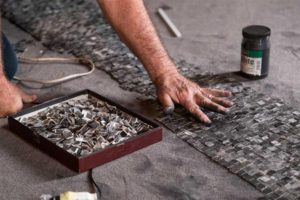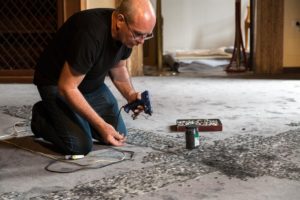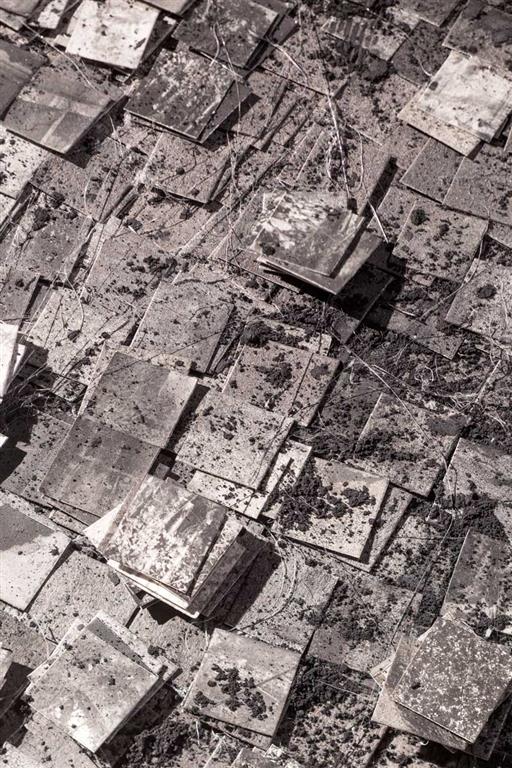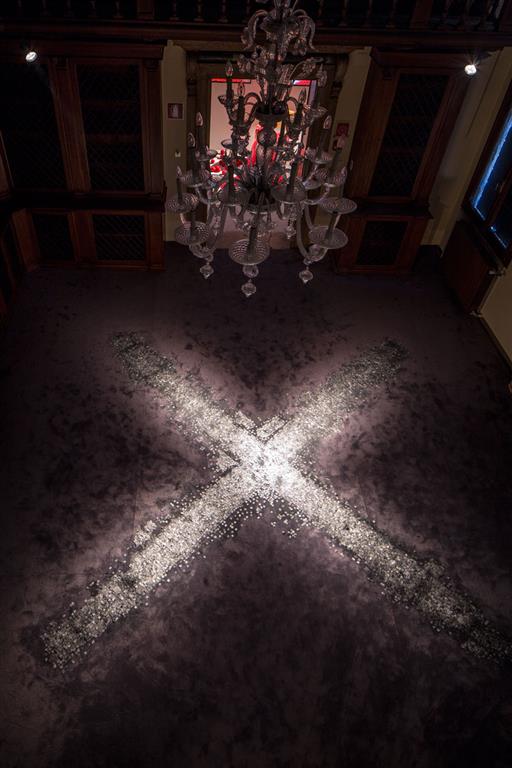Por: Pérez & Del Valle

I was already familiar with the Biennial, but being part of the Cuban selection was of course very exciting. Venice is undoubtedly one of the most important events in the world, and the mere fact of having your work included in it is very encouraging.
As it frequently happens with your production, you created the piece in situ using materials you had prepared in Cuba.
The piece obviously has a connection with some of my previous works. The project emerged because Noceda was familiar with a cross from 1999 and asked me to present a proposal in that direction. I accepted, but apprised him that I have added different resources in my work, and the new piece in no way would resemble that one.
On the other hand, the space was beautiful, square, but also full of limitations inherent to the building. It would have been optimal to have more open space to realize a better display. I began to construct only with photographs, but during the process they became obscured with the graphite . . . The original idea gradually transformed with the resources available on the spot, as often happens with my work. The carpet was creating its own geography with the footsteps, and in that way the photographic and graphite volumes gained a different dimension.
As the process advanced I realized that the piece was adopting a distinctive form similar to a city. I was randomly discovering Venice in the networks of the photographic strips, the graphite glazes and the patterns in the carpet. It was an archipelago in shadows, prolonged in paper deposits and dissolved in a sea of one’s own and strangers’ footsteps. That is why it is entitled La sombra dilatada (The Extended Shadow), which comes from a phrase by Martí: “I like sunsets as if my fatherland were the extended shadow.”
Hence the four elongated points, extended in space. At first I tried to achieve something where the photographs would be very visible, but sometimes the result becomes whimsical, and I let myself be carried away by the particular condition of the place and its relation to the materials I was depositing on it. The light gained an essential shade when the windows were closed and it was made to fall vertically, scarce, and precise. It was a new, more spontaneous perspective in my work, where the elements acquired a more autonomous, almost mystic role.
Venice entailed a turning point in the creative process of my work, a step forward along paths that I will surely continue to explore.
There is a very marked trend in international art forms where the accumulations of very dissimilar objects have become central elements . . .
My first solo show, in 1983, was entitled Acumulaciones (Accumulations), so you can consider me a pioneer of that tendency. The fact is that the human being accumulates objects, experiences, knowledge, memories; he lives surrounded by objects, materials, and stories, which define him more for their combinations than for their uniqueness. My accumulations are the material resource to represent the sediment of memories and events in the form of layers, the memory that is fragmented, deposited, and finally revealed in different ways.
The basic material in all my work is paper, an inseparable companion that can bear any possible epigram; kneaded by time, the elements, the photographic emulsion, and life itself.




